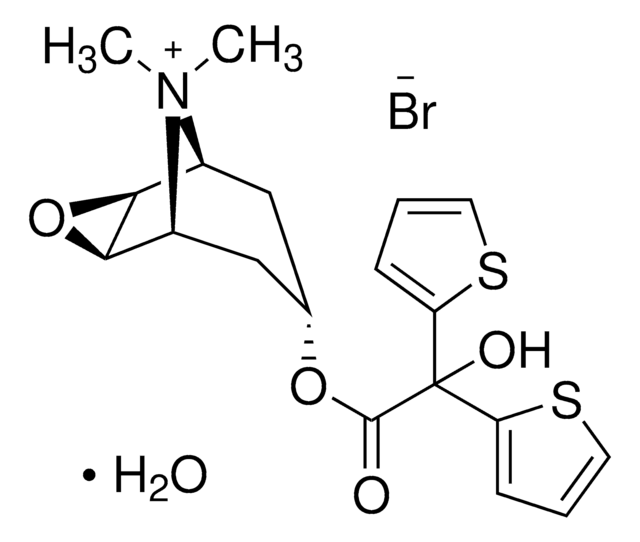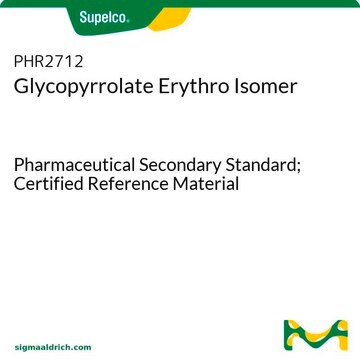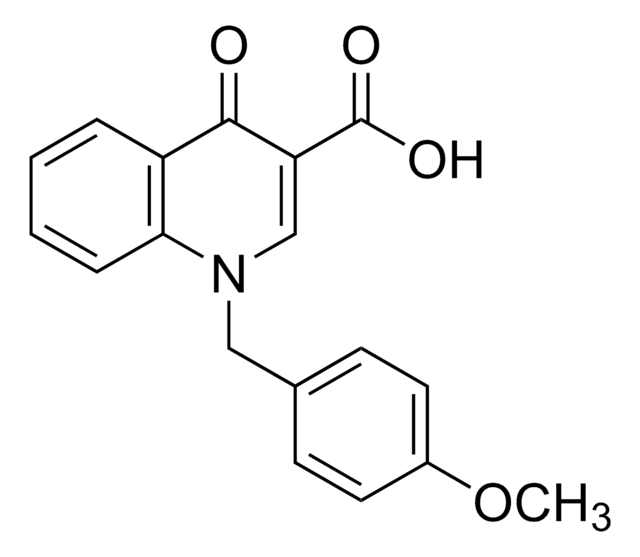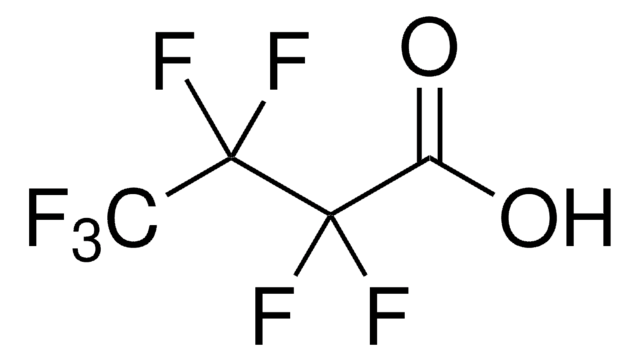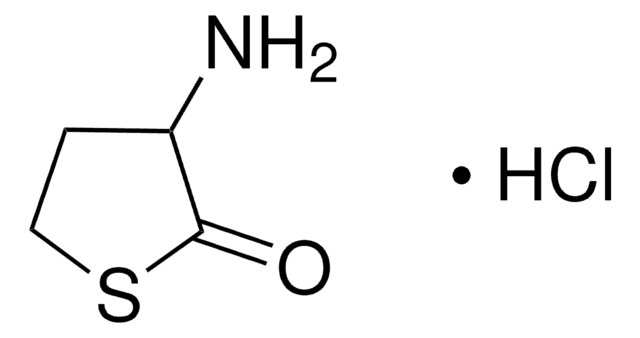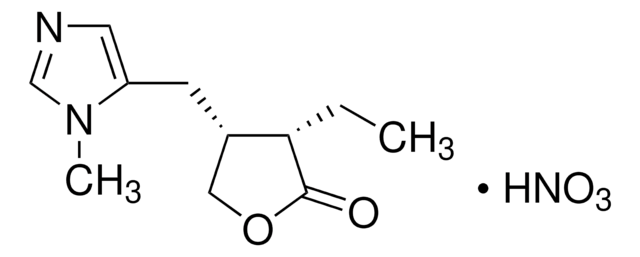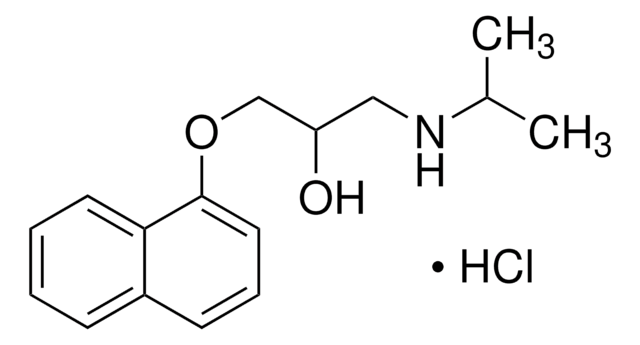SML0029
Glycopyrrolate
≥98% (HPLC)
Synonyme(s) :
α-cyclopentylmandelic acid ester with 3-hydroxy-1,1-dimethylpyrrolidinium bromide, 1-methyl-3-pyrrolidyl α-cyclopentylmandelate methobromide, 1-methyl-3-pyrrolidyl α-phenyl-α-cyclopentylglycolate methobromide, 3-(2-phenyl-2-cyclopentylglycoloyloxy)-1,1-dimethylpyrrolidinium bromide, 3-hydroxy-1,1-dimethylpyrrolidinium bromide α-cyclopentylmandelate, AHR-504, Copyrrolate, Gastrodyn, NSC 250836, NSC 251251, NSC 251252, NVA-237, glycopyrronium bromide
About This Item
Produits recommandés
Pureté
≥98% (HPLC)
Forme
powder
Conditions de stockage
desiccated
Couleur
white to tan
Solubilité
H2O: ≥24 mg/mL
Auteur
Novartis
Température de stockage
2-8°C
Chaîne SMILES
[Br-].C[N+]1(C)CCC(C1)OC(=O)C(O)(C2CCCC2)c3ccccc3
InChI
1S/C19H28NO3.BrH/c1-20(2)13-12-17(14-20)23-18(21)19(22,16-10-6-7-11-16)15-8-4-3-5-9-15;/h3-5,8-9,16-17,22H,6-7,10-14H2,1-2H3;1H/q+1;/p-1
Clé InChI
VPNYRYCIDCJBOM-UHFFFAOYSA-M
Informations sur le gène
human ... CHRM1(1128) , CHRM3(1131)
Vous recherchez des produits similaires ? Visite Guide de comparaison des produits
Description générale
Actions biochimiques/physiologiques
Caractéristiques et avantages
Mention d'avertissement
Warning
Mentions de danger
Conseils de prudence
Classification des risques
Acute Tox. 4 Oral - Eye Irrit. 2 - Skin Irrit. 2 - STOT SE 3
Organes cibles
Respiratory system
Code de la classe de stockage
11 - Combustible Solids
Classe de danger pour l'eau (WGK)
WGK 3
Certificats d'analyse (COA)
Recherchez un Certificats d'analyse (COA) en saisissant le numéro de lot du produit. Les numéros de lot figurent sur l'étiquette du produit après les mots "Lot" ou "Batch".
Déjà en possession de ce produit ?
Retrouvez la documentation relative aux produits que vous avez récemment achetés dans la Bibliothèque de documents.
Les clients ont également consulté
Notre équipe de scientifiques dispose d'une expérience dans tous les secteurs de la recherche, notamment en sciences de la vie, science des matériaux, synthèse chimique, chromatographie, analyse et dans de nombreux autres domaines..
Contacter notre Service technique

